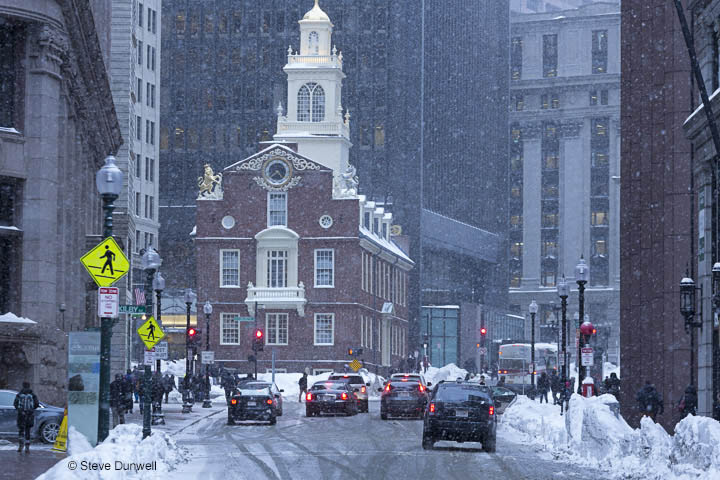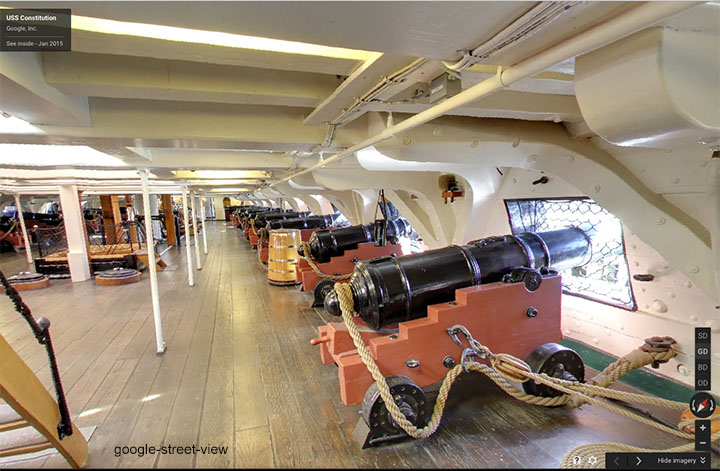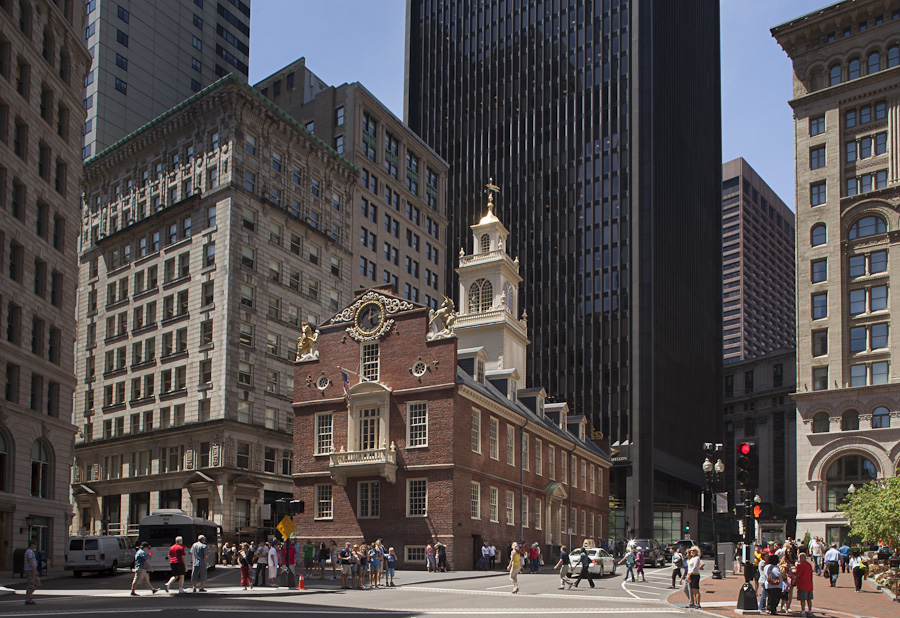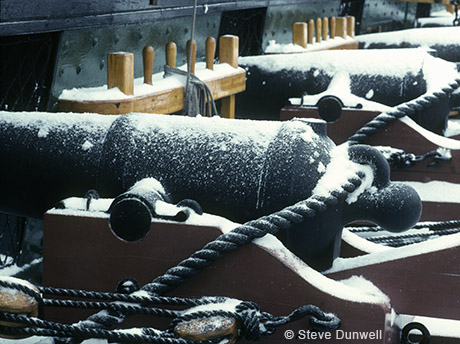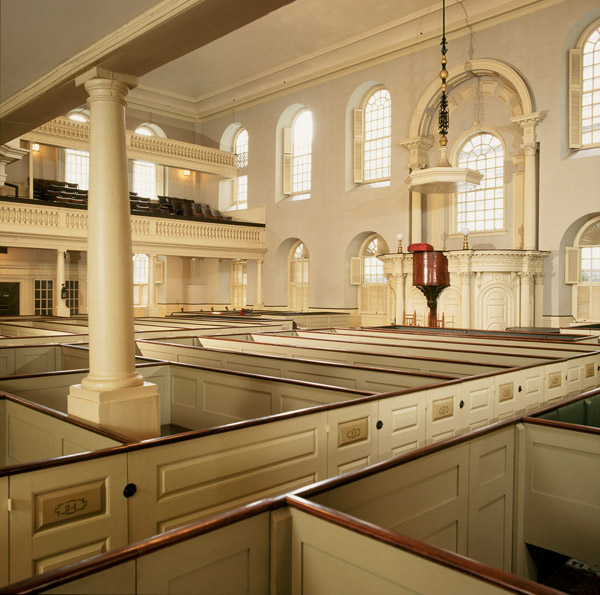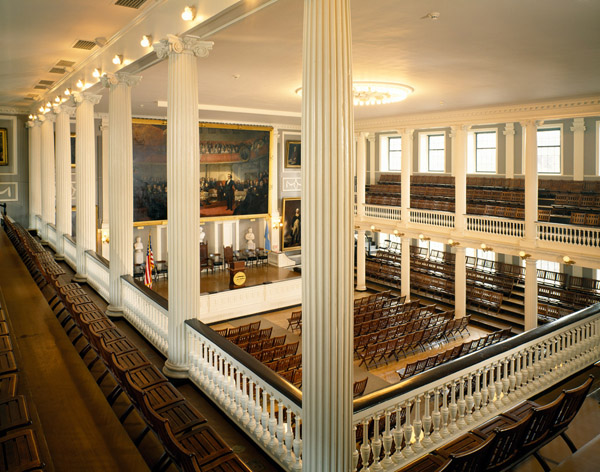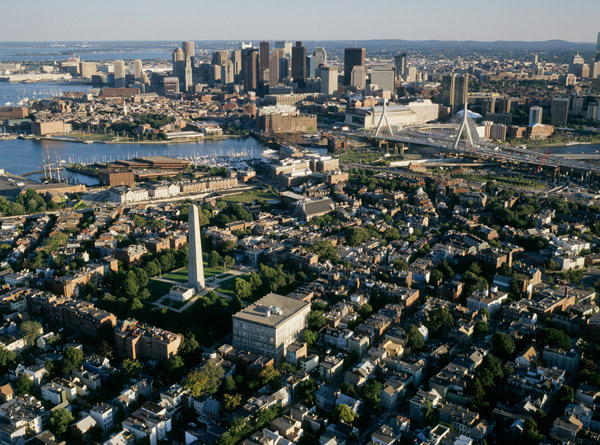The Boston Massacre occurred on a snowy evening, March 5, 1770, in front of the Old State House. Troops occupying Boston to enforce the new British taxes fired into a mob of about sixty rowdy Bostonians, wounding eight and killing five. Crispus Attucks, an African-american, was among the first to die.
Tag Archives: Old Corner Bookstore
USS Constitution interior 360 google streetview
Interior views of “Old Ironsides” USS Constitution are now available on Google Street View, so you can look around, up and down, and visit below decks on this amazing ship. The quality is excellent. Go to www.maps.google.com and search for “USS Constitution, Boston, MA”, then click “street view”…a great way to visit the ship before it goes into drydock for a 3 year rehab.
Old State House photo Freedom Trail
Boston’s oldest public building, erected in 1713 overlooking Long Wharf, replaced an old wooden Town House dating from 1658. After the Great fire of 1711, the town financed a brick building with a room for the Elder’s meeting, a library, an arsenal, and an arcaded farmers’ market “for the country people that come with theire provisions…to sitt dry and warme both in colde raine and durty weather.” It became the hub of the colony’s trade.
Preserved and operated by The Bostonian Society.
Old Ironsides Freedom Trail photo
Boston Tea Party woodcut image
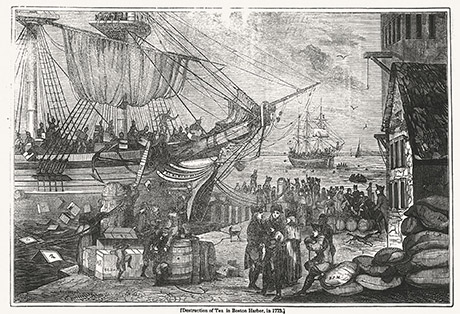 240 years ago. December 16, 1773 – A great crowd gathered at the Old South Meeting House to hear speeches protesting new taxes on imports, including tea. Shouting “Boston harbor a tea party tonight,” they went down to the nearby docks. Thinly disguised as “Mohawks”, fifty men boarded three East India ships – Dartmouth, Beaver and Eleanor. Breaking open 342 chests of imported tea, they dumped the lot into the harbor. The “Intolerable Acts” soon followed as punishment.
240 years ago. December 16, 1773 – A great crowd gathered at the Old South Meeting House to hear speeches protesting new taxes on imports, including tea. Shouting “Boston harbor a tea party tonight,” they went down to the nearby docks. Thinly disguised as “Mohawks”, fifty men boarded three East India ships – Dartmouth, Beaver and Eleanor. Breaking open 342 chests of imported tea, they dumped the lot into the harbor. The “Intolerable Acts” soon followed as punishment.
King’s Chapel freedom trail photo
Old South Church photo, Boston Freedom Trail
Faneuil Hall interior photo
Bunker Hill monument aerial photo
Copps Hill Burying Ground photo
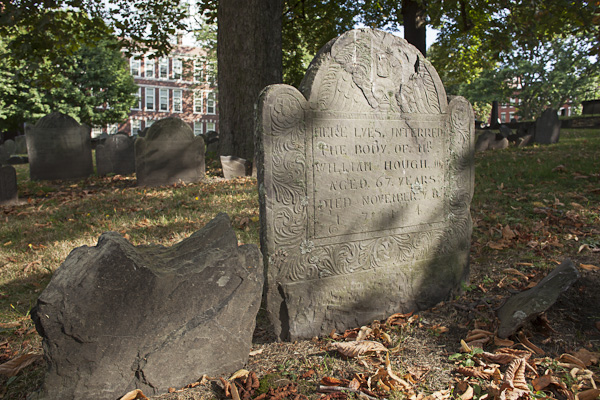 Tombstone of William Hough, 1714. Copp’s Hill, the Town’s second burying ground, was established in 1659 on a hill named for shoemaker William Copp. The site soon rivaled the Common as a public venue, hosting such spectacles as the 1704 execution of seven pirates. Cannons mounted near here shelled Charlestown during the Battle of Bunker Hill, 1775.
Tombstone of William Hough, 1714. Copp’s Hill, the Town’s second burying ground, was established in 1659 on a hill named for shoemaker William Copp. The site soon rivaled the Common as a public venue, hosting such spectacles as the 1704 execution of seven pirates. Cannons mounted near here shelled Charlestown during the Battle of Bunker Hill, 1775.

